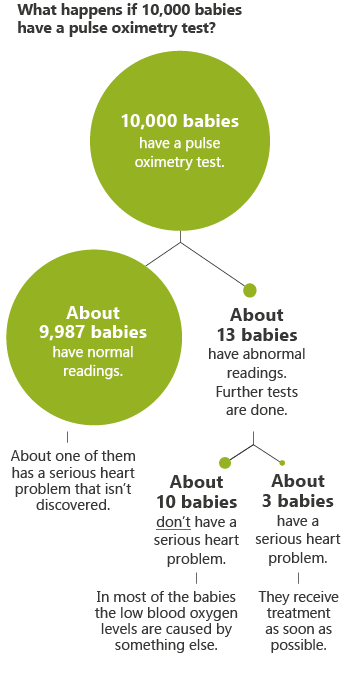Why is a test offered for the detection of serious heart problems in newborns?

Various screening tests are routinely offered during pregnancy and after babies are born. One of those screening tests is known as pulse oximetry. This test detects the majority of serious heart problems before they cause any symptoms, so they can be treated earlier.
A light sensor is used to measure the amount of oxygen in the baby’s blood. Too little oxygen in the baby’s blood could be a sign of a serious heart problem (critical congenital heart disease, or CCHD). Pulse oximetry doesn’t involve taking blood. It also doesn’t hurt and only takes a few seconds.

